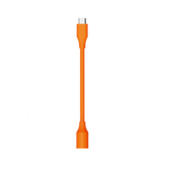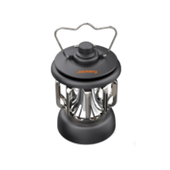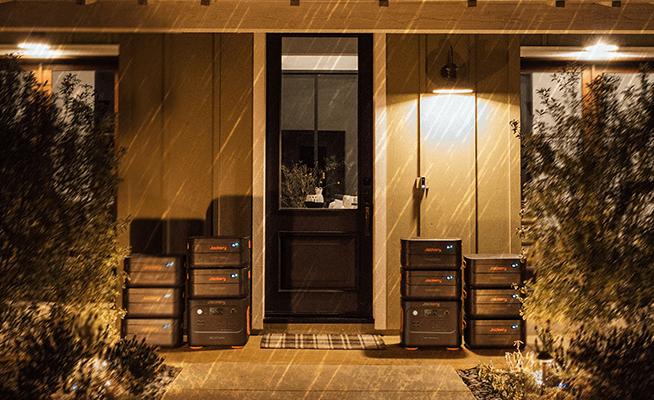If you want more leisure time, you can leave the city and spend a day hiking in the countryside or on the coastal trails around London. From Epping Forest to the rolling hills of the South Downs, many open green spaces provide the best hiking spots in London. Especially on a clear day, you can't resist the charm of the fresh air of the British countryside.
This blog will provide information about hikes from London and how to prepare for them. We also highly recommend Jackery Portable Power Stations, which are famous for their portability and capacity. They are the best companions for hiking in the UK.
|
Key Takeaways: |
|
- Preparing for hikes from London involves route selection, physical training, weather preparedness and safety considerations. - A packing list for a hike from London covering essential gear, clothing, food and emergency supplies. - 8 hikes from London routes that are suitable for most people. - 4 safety tips for hiking from London. - The best times to hike in London are spring and autumn. - We recommend Jackery Explorer 300 Plus or 500 portable power station to charge your hiking electronics and devices outdoors. |
How to Prepare for Hikes from London?
Hiking adventures are exciting, but the outdoors is unpredictable. Weather changes, rugged trails, and long hikes can test your limits. Therefore, preparing for hikes from London requires a combination of route selection, physical training, weather preparedness, and safety.
Here are the specific steps to prepare for your hikes from London.

Choose the Right Hiking Route
Choosing the correct hiking route for your physical fitness level is essential. Before you set out, please research the route's location, distance, and terrain (for example, whether it is steep or rocky). In addition, please confirm whether the path you choose allows you to hike and try to avoid private property and wildlife habitats.
Get Physical Training in Advance
Whether it is a long or short hike, the better your physical fitness, the easier the hike will be. Therefore, take a daily walk 2-3 weeks before departure and gradually increase the distance and incline. Of course, it is best to carry a backpack during exercise to adapt to the weight. If the hike includes hills or long sections, you can add weightlifting, aerobic exercise (running and climbing stairs) and other training to improve endurance.
Check the Weather in Real Time
Weather conditions can affect your hike, so check the weather forecast (Met Office or BBC Weather) before you go. Avoid hiking in stormy or extremely hot weather.
Learn Basic First Aid
Even a tiny cut or sprained ankle can ruin your hike. Therefore, mastering basic first aid knowledge, such as stopping bleeding, treating sprains, and first aid for heat stroke, will help you have a smooth hike. Learning to treat blisters, minor cuts, and sprains can prevent minor injuries from worsening.
Solo vs. Walking with a Group
Before hiking, you must consider walking alone or with a group. Travelling with multiple people allows you to support each other and share the load, which is generally suitable for beginners or remote sections. If hiking alone, please inform your relatives and friends of your itinerary and carry a communication device that ensures coverage.
Get Enough Sleep
Getting enough rest before a long hike is essential because a tired body will likely cause safety hazards. A well-rested body will be more energetic and focused. In short, get 7-8 hours of sleep every day for at least a week before departure.
When Is the Best Time to Hike in London?
Spring (April- May) and autumn (September- October) are generally mild and beautiful seasons, perfect for outdoor exploration.
Why Is Spring the Best Time to Hike in London?
London gets warmer in March, and April and May are even more pleasant for outdoor hiking. Spring temperatures in London are moderate, usually staying below 15 degrees Celsius.
During this time, most parks and gardens in London are beautiful (the cherry blossom season is concentrated in late March to April), such as Hyde Park and Kew Gardens. In addition, there are fewer tourists in London in spring than in summer, making the hiking experience more comfortable.
Best hikes in spring from London:
• The Ridgeway walk
• Surrey Hills walk
• The Poet Stone & The Ashford Hangers walk
• Richmond Park & The Isabella Plantation walk
• Firle Beacon walk
While spring in London is a good time to hike, you must be flexible with the weather. Choose a sunny day and be prepared for rain (it is frequent in March).
Why Is Autumn the Best Time to Hike in London?
London's weather in autumn is cool and dry, with temperatures usually around 15 degrees Celsius, which is suitable for long-distance hiking. In autumn, London's natural landscape is rich in colour, which is ideal for exploring the natural scenery in and around the city. For example, most parks and forest areas in London are covered with autumn leaves in autumn (such as Regent's Park), which also adds to the fun of hiking.
Best hikes in autumn from London:
• St James's Park
• Kew Gardens
• Hampstead Heath
• Richmond Park
• The Thames Path
However, autumn is the peak tourist season in London, and popular attractions may be crowded, so it is recommended that you plan your trip. In addition, you need to pay closer attention to the weather forecast and bring warm clothes because the temperature difference between morning and evening in London in autumn is significant.
Packing List for Hikes from London
If you're hiking for the first time, figuring out what to pack and organising it can be lengthy. Here's a packing list for a hiking trip from London, covering essential gear, clothing, food, and emergency supplies.

Basic Equipment
The following is the essential equipment you need to prepare for hikes from London:
Lightweight waterproof backpack (30-40L)
Hiking shoes (non-slip, supportive mid-to-high shoes)
Navigation tools (maps, compass, GPS device)
Headlamp/flashlight
First aid kit (Band-Aids, disinfectant wipes, painkillers, anti-allergy medicine, personal special medicine)
Garbage bag
Multi-purpose tool (such as Sa wiss Army knife)
Clothing and Protective Equipment
The following are the clothing and protective equipment you need to prepare for hikes from London:
Layered clothing (quick-drying underwear + fleece/cardigan + windproof jacket)
Spare socks
Hat (windproof hat or thin fleece hat)
Gloves
Rain gear (light raincoat, waterproof pants)
Rain gear (light raincoat, waterproof pants)
Food and Supplies
The following are the food and supplies you need to prepare for hikes from London:
High-energy snacks (nuts, energy bars, dried fruits, chocolate)
Portable food (compressed biscuits, dehydrated meal packs, beef jerky)
Water (1-2L water bottle + spare purification tablets)
Coffee or tea
Emergency and Personal Supplies
Here are the emergency and personal supplies you need to prepare for hikes from London:
Emergency contact information
Small British Pound cash and credit cards
Toiletries (toothbrush, small bottles of toiletries)
Toilet paper
Insect repellent
Windproof lighter or matches
Spare batteries
Portable power station
Special Equipment
In addition to the above essential hiking equipment, you may also need to consider the following special equipment, depending on the difficulty and terrain of the hiking route:
Trekking poles
Knee pads
Snow gaiter and crampons (winter or high altitude)
However, the above packing list for hikes from London is for reference only. You should adjust your equipment according to your specific destination. For example, if hiking on a mountain route, you may need to bring warm clothes.
Top 8 Hikes from London
Strolling along the long coastline, picnicking in a beautiful national park or enjoying a meal in a traditional pub are all ways to enjoy life in London. But if that's not enough and you want to experience a more challenging walk, you don't have to go far from London to find some great walks. Here are eight hikes from London.

Epping Forest's Oak Trail
Distance: 6.6 miles
Starting Point: Theydon Bois
Difficulty: Moderate
Located in Epping Forest, northeast of London, the Oak Trail is a popular hike for outdoor enthusiasts. The 6,000-acre Epping Forest is filled with dense ancient woodlands full of birch and beech trees, and the Oak Trail is incredible. The Oak Trail takes advantage of the thick forest and glades while being well-marked. You may also have the opportunity to visit the iconic Elizabethan Hunting Lodge and see various wildlife.
Box Hill Circular Walk
Distance: 8 miles
Starting Point: Box Hill Shepherd's Hut, KT20 7LB
Difficulty: Challenging
The Box Hill Circular Walk is a problematic walk near Dorking, Surrey. The walk covers much of the Box Hill estate, so that you can expect steep hills, deep valleys, and fantastic viewpoints. You can also enjoy lunch at some of the pubs along the way.
Ockley to Leith Hill
Distance: 7.9 miles
Starting Point: Oakleigh
Difficulty: Moderate
For those who want a quick escape from London and a trip to the great outdoors, Ockley to Leith Hill is a great walk. You can take a train to Oakleigh, then follow the path to Leith Hill, the second-highest peak in southeast England. On a clear day, you can see the London skyline. You can head to Loch Vane, a stunning and often-overlooked ancient woodland.
Ramsgate To Margate
Distance: 9.3 miles
Starting Point: Ramsgate
Difficulty: Moderate
Ramsgate To Margate is a popular walking and hiking route near Ramsgate in Kent. Along this beautiful coastal path, you can enjoy gorgeous views of the sea and Victorian buildings. As you pass Broadstairs, you can stroll along the flat sandy beach and enjoy stunning views of the Channel.
Rickmansworth to Chesham
Distance: 10.3 miles
Starting Point: Rickmansworth
Difficulty: Moderate
Rickmansworth to Chesham is a popular walking, running and hiking route. From Rickmansworth to Chesham, the route passes through several town lanes, wooded paths and fields. Along the way, you may also have the opportunity to see rare watercress beds, water voles, kingfishers, orchids and dragonflies. The best time to enjoy this walk is from January to October.
Hassocks to Lewes
Distance: 10.4 miles
Starting Point: Hassocks
Difficulty: Moderate
The Hassocks to Lewes walk starts with a half-mile climb at Hassocks with a gradient of 10-20%, which is quite tricky for many people. When you reach the top of the mountain, you will see a column windmill, a tower windmill, and a roundhouse of a former column windmill dating back to 1765.
Seven Sisters
Distance: 13.6 miles
Starting Point: Seaford Railway Station
Difficulty: Challenging
If you hike to Seven Sisters, you can enjoy unique coastal scenery and iconic cliffs. But you must pay special attention to safety when walking here, whether uphill or downhill, especially the cliffs.
The Isle of Grain to Woolwich
Distance: 47 miles
Starting Point: Isle of Grain
Difficulty: Challenging
The Isle of Grain to Woolwich is adjacent to the Thames and is one of the England Coast Path's newest and most content-rich sections. Along the way, you will see ancient and abandoned forts, small beaches, Royal Society for the Protection of Birds (RSPB) sites, marshes full of wildlife, and London Stone, which marks the edge of the Thames Estuary. The Isle of Grain to Woolwich is an excellent leisure resource for nearby residents and hiking enthusiasts worldwide.
Jackery Portable Power Stations for Hiking
A hiking portable power station is a small, light gadget that saves power to charge your electronics when there isn't an outlet nearby. It takes AC and DC currents from a wall outlet, solar panels, or a car's battery and stores them in a battery that is small, portable, and easy to keep.
A good power station, like Jackery Portable Power Station, quickly provides enough power to keep almost any gadget running, even in the middle of nowhere. It should be able to charge several things simultaneously and have a long-lasting battery.
Jackery takes pride in offering unparalleled power stations and charging solutions tailored to meet diverse individual requirements, whether for a three-day solo hike or a two-week family camping trip in the wilderness.
Jackery Explorer 500
The Jackery Explorer 500 is an ideal small generator that won't take up much space in your backpack. It is the size of a basketball and weighs 13.3 pounds (6 kg), making it perfect for winter hiking. It has a 500W power source (1000W surge) and a 518Wh battery capacity. It also has several output ports that can run multiple devices simultaneously. Here are some of the features that the Jackery Explorer 500 have:

• Power and Capacity: The power source is 500W (1000W surge peak), and the battery can hold 518Wh.
• Charging Ports and Times: There are three charging ports: one for solar charging (9.5 hours with 1 Jackery SolarSaga 100W solar panel), one for AC charging (7.5 hours), and one for car charging (8 hours).
• Compatibility: It powers standard tools and small appliances, such as laptops, projectors, smartphones, space heaters, toasters, and more. You don't have to worry about problems with widely used devices.
• Safety: The Battery Management System (BMS), which is the best in its class, ensures that skiing is a breeze. 500 cycles at 80% or more of full capacity. 14-104°F (Jackery Explorer 500 Portable Power Station) and 14-149°F (Jackery SolarSaga Solar Panels).
• Multiple Ports: one AC (500W) output, two DC (12V, 7A) outputs, one garage (12V, 10A), three USB-A (5V, 2.4A) outputs, one AC input, and one DC input.
The following are the working hours for using Jackery Explorer 500 (518Wh) to charge winter hiking electronics and devices:
|
Hiking Electronics |
Working Hours |
|
Walkie Talkie (70W) |
5.9H |
|
Headlamp (30W) |
13.8H |
|
Phone (27W) |
15.3H |
|
Camera (10W) |
41.4H |
|
GPS Device (60W) |
6.9H |
(*The working hours are only for reference; the actual working hours depend on your usage.)
Jackery Explorer 300 Plus
Compared to the Explorer 500, the Explorer 300 Plus has a different battery cell (LiFePO4), which can stand more in harsh weather conditions and last longer in a small size. Besides, it is smaller and lighter than Explorer 500, weighing only 3.75 kg, enabling easy portability anywhere you hike. Learn more features of Explorer 300 Plus:

• Charge 4 Devices at Once: The Explorer 300 Plus is a portable power station featuring a 300W AC Pure Sine Wave Inverter (600W Surge Peak) and 288Wh capacity. It can charge up to four devices concurrently, facilitated by one AC, USB-A, and USB-C output, enabling rapid and effortless charging of several appliances.
• Multiple Recharging Ways: The MPPT technique guarantees 99% efficiency in solar charging. A complete wall charge requires 2 hours, whereas solar charging with a single SolarSaga 200W panel necessitates 4 hours. With car charging capabilities, concerns over power disruptions will be alleviated.
• ChargeShield Protection: Jackery's ChargeShield fast charge technology pioneers the market by employing a stepped variable-speed charging algorithm, thereby improving safety and extending battery pack lifespan by 50%. At a temperature of 45℃, the power station can achieve full charge in around 2 hours.
The following are the working hours for using Jackery Explorer 300 Plus (288Wh) to charge winter hiking electronics and devices:
|
Hiking Electronics |
Working Hours |
|
Walkie Talkie (70W) |
3.3H |
|
Headlamp (30W) |
7.7H |
|
Phone (27W) |
8.5H |
|
Camera (10W) |
23H |
|
GPS Device (60W) |
3.8H |
(*The working hours are only for reference; the actual working hours depend on your usage.)
Safety Tips for Hikes from London
There are many beautiful walks and hiking routes near London, each with unique characteristics. However, no matter your experience level, always consider your safety when exploring the routes of hikes from London, as outdoor conditions are unpredictable. Here are some safety tips for hiking in London.

Safety Tip 1: Itinerary Planning and Informing Family and Friends
Please plan your hiking route, estimated time, and stops in advance and mark your route using a map or hiking app. Before departure, provide your family or friends with a route map, estimated return time, and emergency contact information. Communicate regularly (e.g., report safety every 2-3 hours).
Safety Tip 2: Eat and Drink Regularly
Acute dehydration can occur after a short period of intense activity. Therefore, you should not risk going for hours without drinking water during an energy-consuming outdoor activity such as hiking.
Sufficient calories will allow you to start and end the day energetically. Eat high-energy snacks (such as nuts and energy bars) every 1-2 hours to avoid hypoglycemia.
Safety Tip 3: Hiking with a Companion and Teamwork
Please try to avoid walking alone. In remote areas, hiking with more than three people is recommended. However, walking with several companions requires a clear division of labour (such as navigation and material management), a synchronised pace, and avoiding leaving members alone.
Safety Tip 4: Pay Attention to Avoid Dangers
While hiking, you may encounter the following things to avoid, including but not limited to:
• Unstable rocks or boulders
• Very steep rock faces or cliffs
• Very steep grassy slopes
• Rivers or streams with strong currents
• Wildlife groups
If possible, avoid them and try to take another route. Signs usually warn pedestrians where cattle or other potentially dangerous animals are. In addition, you may encounter ticks that carry Lyme disease bacteria. Avoid plants ideal for ticks, such as ferns, long grasses, and heather.
Hikes from London FAQs
The following are the frequently asked questions about the hikes from London:
1. What is the British slang for hiking?
The British slang for hiking is walking.
2. Are hiking and trekking the same?
According to research by Thule, while hiking and trekking have many similarities, there are also differences.
Compared to trekking, hiking tends to be short trips on trails specially developed for enthusiasts. Therefore, it makes walking and navigation easier.
In addition, hiking is often done in untamed nature, where anything can happen.
3. Where to go for a hike near London?
According to AllTrails, there are 749 hiking trails, mountain biking routes, backpacking trails, and more near London. These include 362 family-friendly trails, 567 hikes with waterfalls or scenic views, and five wheelchair-friendly trails with helpful accessibility guides. Whatever your needs, you can find the best hikes in London.
Final Thoughts
Whether you want to get close to nature or explore unique historical sites, hikes from London offer many options. Fortunately, there are many hiking trails not far from London that will allow you to breathe fresh air and enjoy a sense of tranquillity. However, you must be well prepared to have a perfect hike in the countryside near London. Follow this guide to enjoy a great hike from London.























































































![Top 8 Hikes from London [Ultimate Guide]](http://uk.jackery.com/cdn/shop/articles/hikes_from_london_guide_7a24992b-de30-46a1-ad6f-1681957d64e9.png?v=1743130974)






